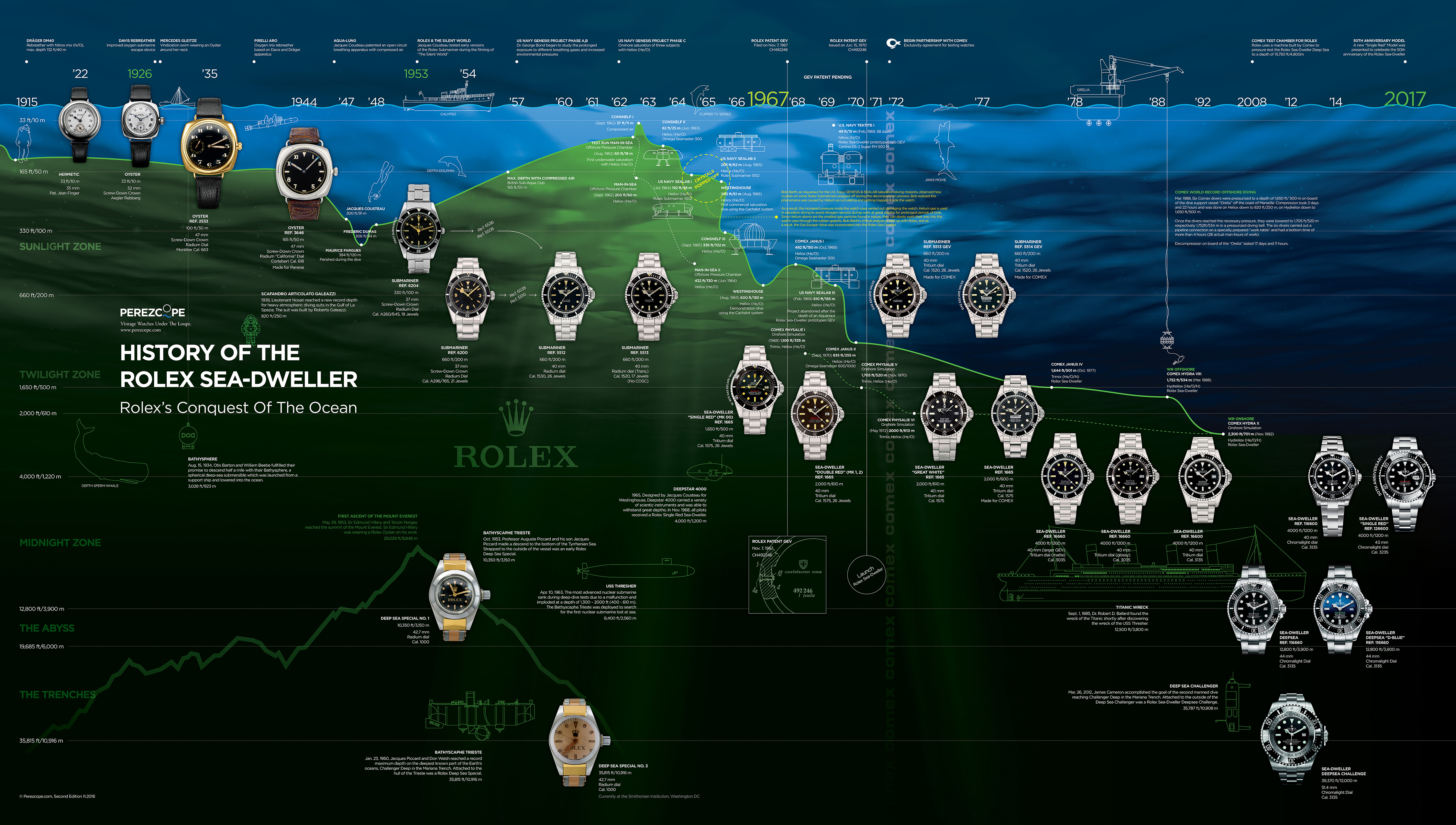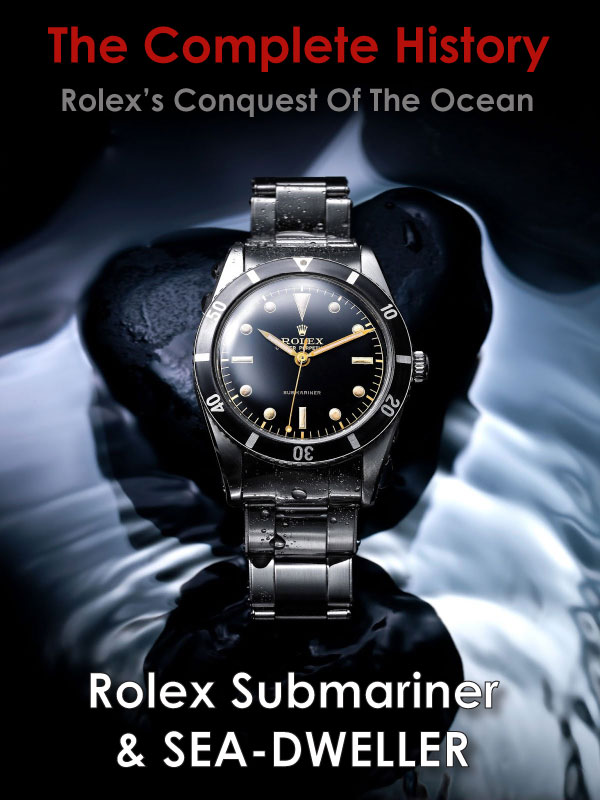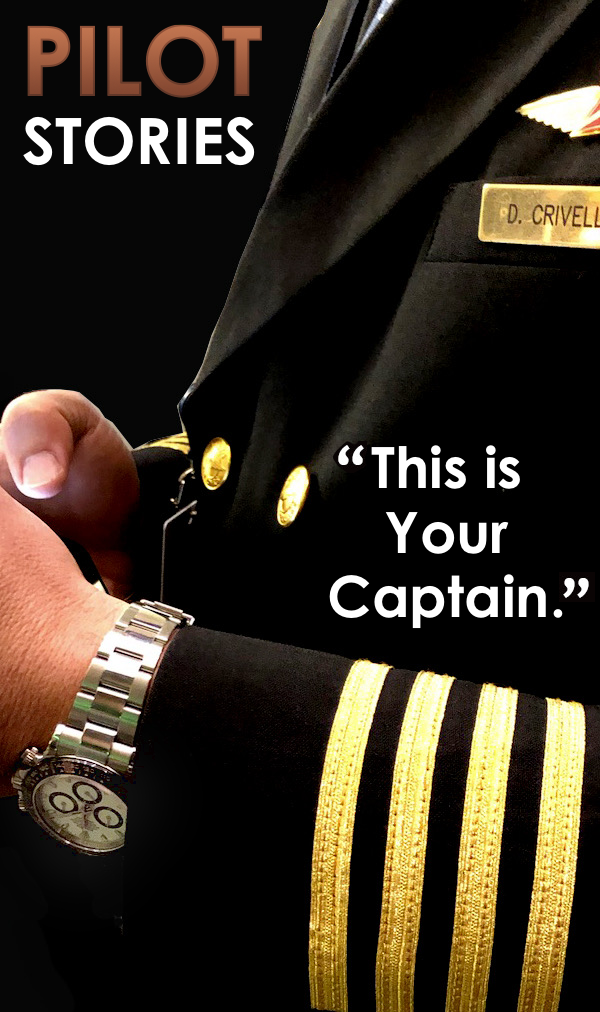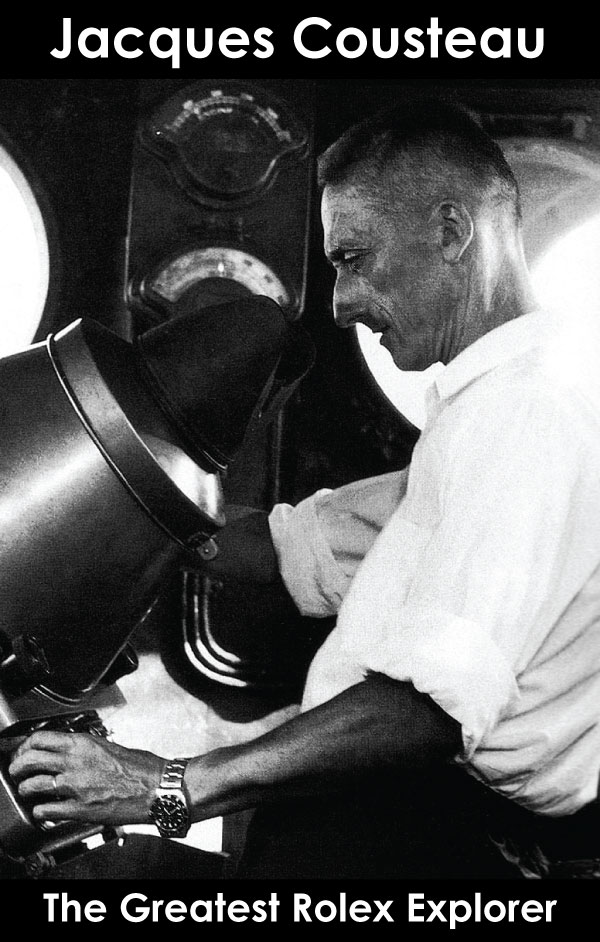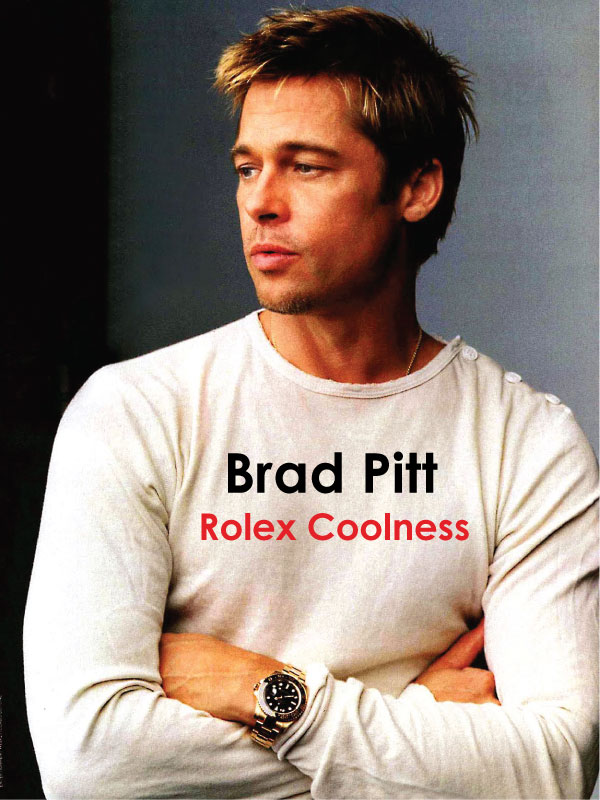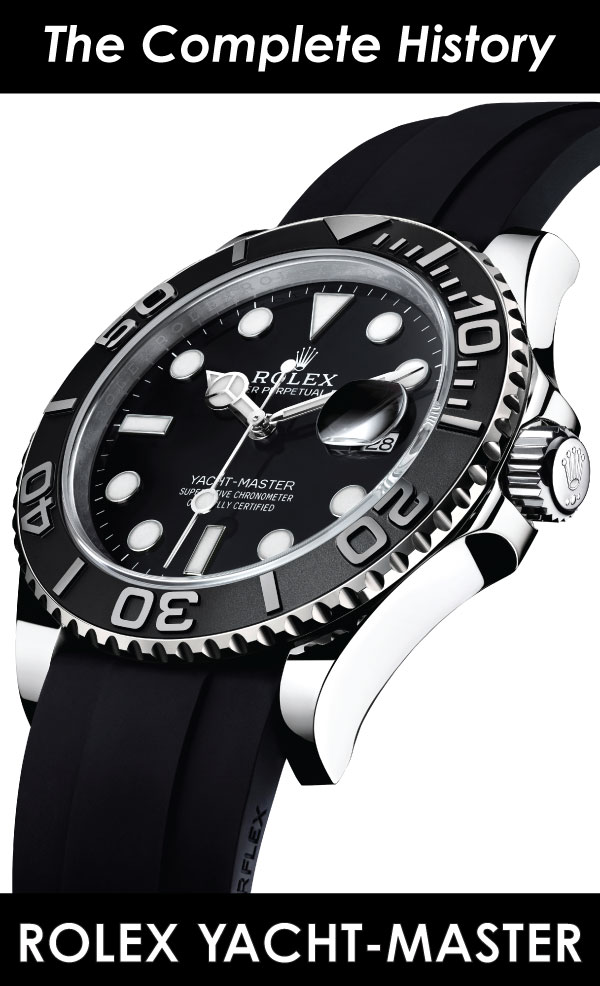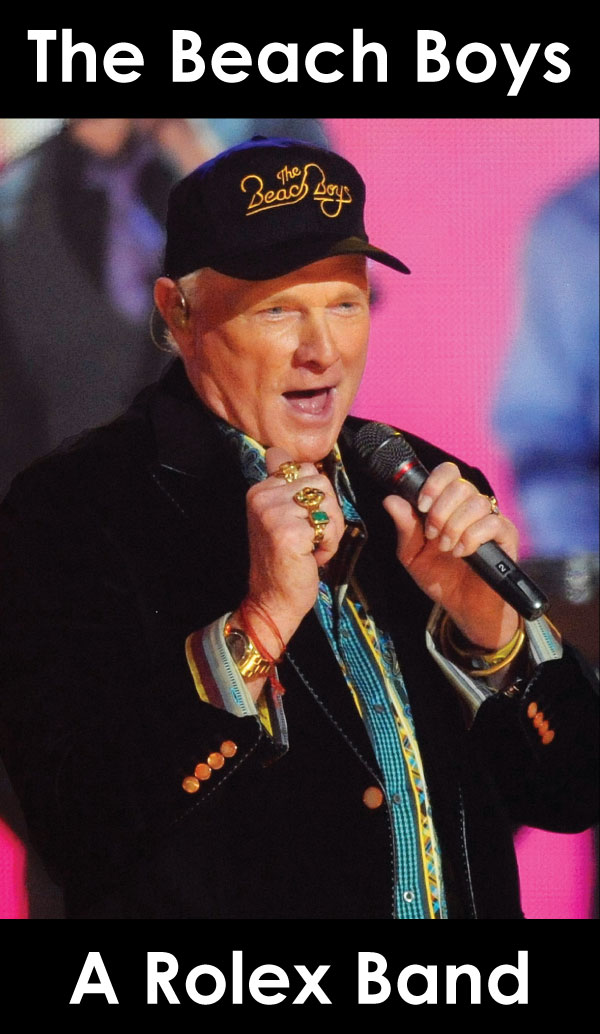
1967 Helium Release Valve
The three pages below are a copy of Rolex's Patent Application for the Helium Release Valve. Notice it was originally filed on November 6, 1967.





To learn the REAL HISTORY of the Rolex SEA-DWELLER you can read Jake's story named "The Complete History Of The Rolex Submariner & SEA-DWELLER: Rolex's Conquest Of The Ocean." Also, check out Part 5 of Chapter 19 in that story to learn all about COMEX and Rolex, as well as SEALAB and Jacques-Yves Cousteau's critical roles in the development of the Rolex SEA-DWELLER.
Also, check out Jake's recent story on SEALAB which further clarifies how Rolex developed the SEA-DWELLER with the U.S. Navy SEALAB.
Jose's Rolex timeline seen below pretty much says it all...
Where did the Rolex SEA-DWELLER get its name from? The photo below, taken in 1968 shows U.S. NAVY Doctor George Bond being interviewed with his close associate, Captain Jacques-Yves Cousteau. Dr. Bond basically invented saturation diving for the U.S. Navy, and developed and ran its SEALAB program. Jacques-Yves Cousteau actually had Aquanauts living in "Dwellings" in the "SEA" before SEALAB did, but his experiments were largely based upon the U.S. Navy developments in DEEP-SEA Diving technology.
U.S. Navy
DEEP-SEA DIVERS
The Photo below shows the U.S. Naval School of DEEP-SEA DIVERS who also wore Rolex Submariner watches. The man standing third from the left is pioneering saturation diver Bob Barth who went on to participate in SEALAB I, II & III. Bob Barth worked diligently with Rolex to develop the helium release valve on the SEA-DWELLER...
Want to see what real SEA-DWELLERS look like? The photo below shows NASA Astronaut and SEALAB Aquanaut, Scott Carpenter in front of the SEALAB II Habitat. Scott is in the first row, second from the left.
"The Rolex Submariner & Rolex SEA-DWELLER have a cachet that is unmatched by any other watch. The Rolex brand is the most highly respected in my book. The Rolex Submariner was the preferred diving watch for U.S. NAVY SEALAB Divers."
–Scott Carpenter
U.S. Navy SEA-LAB Aquanauts:
Bob Barth, Wilbur Eaton & Scott Carpenter
Bob Barth, Wilbur Eaton & Scott Carpenter
Team 1 Preparing To Dive Down To
SEA-LAB 2 Habitat [August 28, 1965]
SEA-LAB 2 Habitat [August 28, 1965]

Below we see a 1967 Rolex Submariner magazine ad which was published during the U.S. Navy SEALAB program. This is the closest vintage magazine ad I am aware of Rolex advertising the Submariner in relation to a Submarine Captain. Notice the text in the ad reads:
"You're looking at the Rolex Submariner. For many years, it's been standard gear for SUBMARINERS, frogmen and all who make their living on the seas."
"You're looking at the Rolex Submariner. For many years, it's been standard gear for SUBMARINERS, frogmen and all who make their living on the seas."
The First SEA-DWELLERS
Conshelf I
Conshelf I [September 1962] Location: Frioul Island, Marseille, France
Conshelf I got underway in September of 1962, and according to Jacques Cousteau, the objective was "Two men living for one week in a small building at a depth of 37 feet and working several hours a day at 65 feet." The Conshelf I structure was essentially a huge drum about the size of an industrial shipping container that was ballasted with an open hatch for the divers to enter and exit the underwater house.
In the photo below we see Conshelf I's barrel shaped habitat being tested for leakage before being submerged for the experiment. I may be wrong, but I think I recognize fellow DEEP-SEA Submariner, Jacques Piccard up on the top deck, leaning back, in the white shirt with dark slacks filming with a camera in his hand. Jean-Michel Cousteau who is Jacques-Yves son mentioned he was close friends with Jacques Piccard.
Jacques-Yves Coustea previously worked with Jacques Piccard on the Bathyscaphe Project, and would work with Piccard again in 1964 on a new floating laboratory nicknamed "Mysterious Island" and again in 1965 from April 13 to May 10 on a geophysical and acoustical mission along the south coast of France.
It is kind of shocking we have never seen a photo of the two Jacques together, but this may be the first one. Cousteau, of course, is located in the bottom right hand corner of the photo seen above on the deck of the Calypso.
Albert Falco and Claude Wesly of the Calypso diving team (pictured below wearing red caps) swam into history when they became the first "Oceanauts [French]" or "Aquanauts [American]" or "SEA-DWELLERS [ROLEX]" to live or "DWELL" under the SEA as part of Operation Conshelf.
Albert Falco and Claude Wesly of the Calypso diving team (pictured below wearing red caps) swam into history when they became the first "Oceanauts [French]" or "Aquanauts [American]" or "SEA-DWELLERS [ROLEX]" to live or "DWELL" under the SEA as part of Operation Conshelf.
In the photo above we see Jacques Cousteau visiting with Falco and Wesly inside the Conshelf I habitat. When I interviewed Jacques-Yves Cousteau's son, Jean-Michel Cousteau recently, he mentioned he also visited Falco and Wesly. I think it is likely Jean-Michel took the photo above.
The 1965 letter below is from Jacques-Yves Cousteau to William Culpepper regarding the design of the SEALAB II habitat with recommendations from J.Y.C.
I'd like to be under the sea
In an octopus' garden in the shade
He'd let us in, knows where we've been
In his octopus' garden in the shade
I'd ask my friends to come and see
An octopus' garden with me
I'd like to be under the sea
In an octopus' garden in the shade.
We would be warm below the storm
In our little hideaway beneath the waves
Resting our head on the sea bed
In an octopus' garden near a cave
We would sing and dance around
Because we know we can't be found
I'd like to be under the sea
In an octopus' garden in the shade
We would shout and swim about
The coral that lies beneath the waves
(Lies beneath the ocean waves)
Oh what joy for every girl and boy
Knowing they're happy and they're safe
(Happy and they're safe)
We would be so happy you and me
No one there to tell us what to do
I'd like to be under the sea
In an octopus' garden with you

Ian Koblick was one of the aquanauts on Tektite I who wore a prototype Rolex Single Red SEA-DWELLER. Ian Koblick is pictured above and below wearing his Rolex Single Red SEA-DWELLER prototype [Reference 1665].
Ian Koblick's prototype 1967 Rolex Single Red SEA-DWELLER that he wore during Project Tektite I is pictured below in a recent photo. To date, none of of the Single Red SEA-DWELLER prototypes from Tektite have appeared with helium release valves, which is strange for a few reasons. It might have something to do with the fact that the Tektite Habitat was in fairly shallow water, so maybe Rolex felt they did not need SEA-DWELLER models with the HRV. I believe there is one known example of the Single Red SEA-DWELLER that does have a helium release valve, but I don't know if it was from Operation Tektite.
In the photo below we see Ian Koblick pictured on the left, talking with an agent from the United States Ministry Of Interior. Pictured on the right is Richard A. Waller who is wearing his prototype Single Red Rolex SEA-DWELLER prototype.
The Omega French Connection
Rolex officially launched the SEA-DWELLER [Reference 1665] to the public in 1971/1972. In a bizarre twist of fate, COMEX divers had been wearing and testing prototype OMEGA SEAMASTER models. The Omega magazine ad below announced the relationship between Omega and Comex.
COMEX wore and tested OMEGA "Ploprof" models [Reference 3350: Caliber 1002]. The photo below shows a really cool OMEGA SEA-MASTER Ploprof prototype that has COMEX and JANUS II engraved into the case. COMEX's JANUS II diving program began in 1970, thus COMEX could not have been working with Rolex on the development of the Helium Release Valve that was incorporated into the SEA-DWELLER prior to 1969.
Also, in an interview with COMEX's founder, Henri-Germain Delauze back in 2009 he specifically told me COMEX had been testing watches for Omega, when Rolex CEO, André Heiniger came to visit him in 1971, and offered to equip his entire team of DEEP-SEA divers with ROLEX/COMEX watches. Henri said, once that happened, we were completely done with Omega!
The Omega Magazine Advertisement below confirms this fact.
Inner Space Race
The photo below shows a really cool prototype Titanium OMEGA SEAMASTER 1000 Polprof that was tested by COMEX in 1971, just before they switched over to Rolex. The OMEGA Polprof worked in the opposite way of the Rolex SEA-DWELLER in the sense that instead of having a helium release valve, it was so sealed up that it would not allow helium to enter the case to begin with. Also, if you look closely at the OMEGA polprof, it kind of looks like a vintage Panerai case with the half-crescent crown protection system.
It is worth noting that Omega filed a patent for the SEAMASTER Polprof in 1967, which was the same year Rolex filed it's patent for the Helium Release Valve. The Polprof featured an interesting feature that locked the bezel and stopped it from being able to spin, unless you pressed on the orange button, thus requiring two hands to operate, whereas the Rolex Submariner and SEA-MASTER only rotated counter-clockwise, so you could not add time by mistake.
Henri-Germain also told me in an interview, COMEX never had any involvement in the development of the SEA-DWELLER or the Rolex Helium Release valve. An obvious question is why did Rolex offer to equip COMEX with Rolex watches? Was it because they thought they had lost to Omega in the field of outer space, so they wanted to make sure they dominated inner space?
Or maybe it was because there was other real possibility to test dive watches under real life conditions? Also, it may have had to do with the fact that Rolex was worried Omega was going to try and dethrone them with the SEA-MASTER Polprof, so they stepped up their game!?!!
The following letter from the Director of Rolex in Geneva regarding Rolex Singapore is fascinating as it discusses the testing of a Rolex SEA-DWELLER Prototype, and how COMEX had recently taken over testing in early 1972.
The photo below is the first known photo of Henri-Germain Delauze wearing a Rolex Submariner and it was taken in 1972. Henri-Germain sent me this image with a bunch of photos from his archive.
Another obvious question is if Rolex developed the SEA-DWELLER in 1967, how is it that the U.S. Navy SEALAB and Tektite operations did not receive and start testing them until 1969? This is simple to answer when you do the math. The Rolex patent application stated the Rolex SEA-DWELLER was not first used until November 6, of 1967. SEALAB (and assumably Tektite] received their prototype Rolex SEA-DWELLER prototypes in January of 1969, which was fourteen months later. This was due to the fact Rolex had to wait until SEALAB 3 and Tektite I were launched, as nobody else was conducting such deep saturation dives that placed aquanauts in undersea dwellings under real life conditions.
So if the Rolex SEA-DWELLER was developed and tested by The U.S. Navy SEALAB and Operation Tektite, who ended up being the ultimate beneficiary of the SEA-DWELLER? A French company named COMEX!
Rolex COMEX SEA-DWELLER Ads
Rolex never sold Submariner or SEA-DWELLER models with the COMEX logo designation to the public, but they showcased their relationship with COMEX in magazine ads for the Rolex SEA-DWELLER. This first Rolex SEA-DWELLER ad is from 1975 and it features the amazing DOUBLE-RED SEA-DWELLER dial designation that is highly coveted by collectors.
Alain Jourde and Claude Boardier are featured in the Rolex COMEX magazine above and in this photo from the COMEX archives we see them in the COMEX habitat both sporting their Rolex SEA-DWELLER models. Of course, 610 Meters is equal to 2000 feet. 51 Heures when translated from French to English means 51 hours.
Rolex continued development of the Submariner and SEA-DWELLER through the 1970s, and continued to support research programs that depended upon the Submariner, as seen below in this 1975 Rolex ad featuring Dr. Joe Macinnis.
The 1975 Rolex Ad below features Peter Benchley in a Rolex Submariner ad. Peter Benchley was good friends with T. Walker Lloyd.
Conclusion
The image below from our Instagram Page, is meant to be lighthearted and hopefully will make you laugh when you see it :-) The reality is despite John Mayer being a self professed "Big collector of COMEX Submariner and SEA-DWELLERS" he somehow misstated the Rolex historical facts. This could be because the person who sold him his 5514 Comex was equally ill-informed about the real and true history of the Rolex SEA-DWELLER. So John, now you know the real history of the helium release valve and SEA-DWELLER as well as the Rolex Reference 5514 Submariner ;-)
On Jake's Rolex World we specialize in separating fact from fiction in Rolex history. If anybody wishes to add to this or dispute our findings please feel free to do so on our Instagram page for this story.






